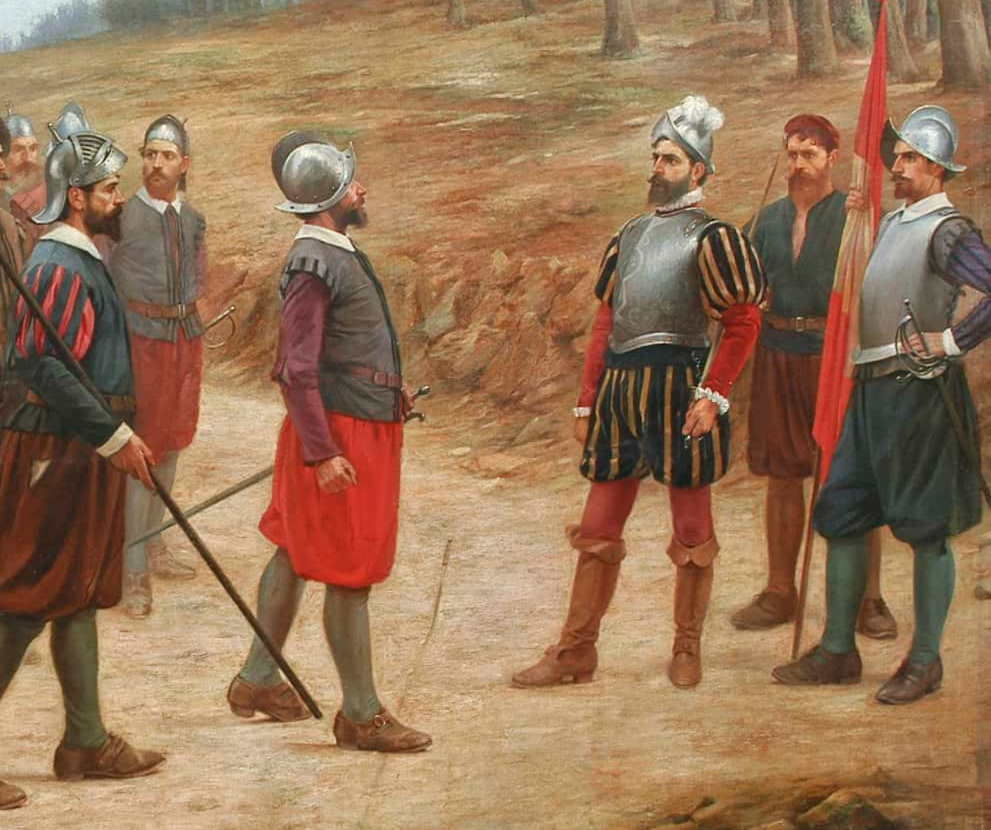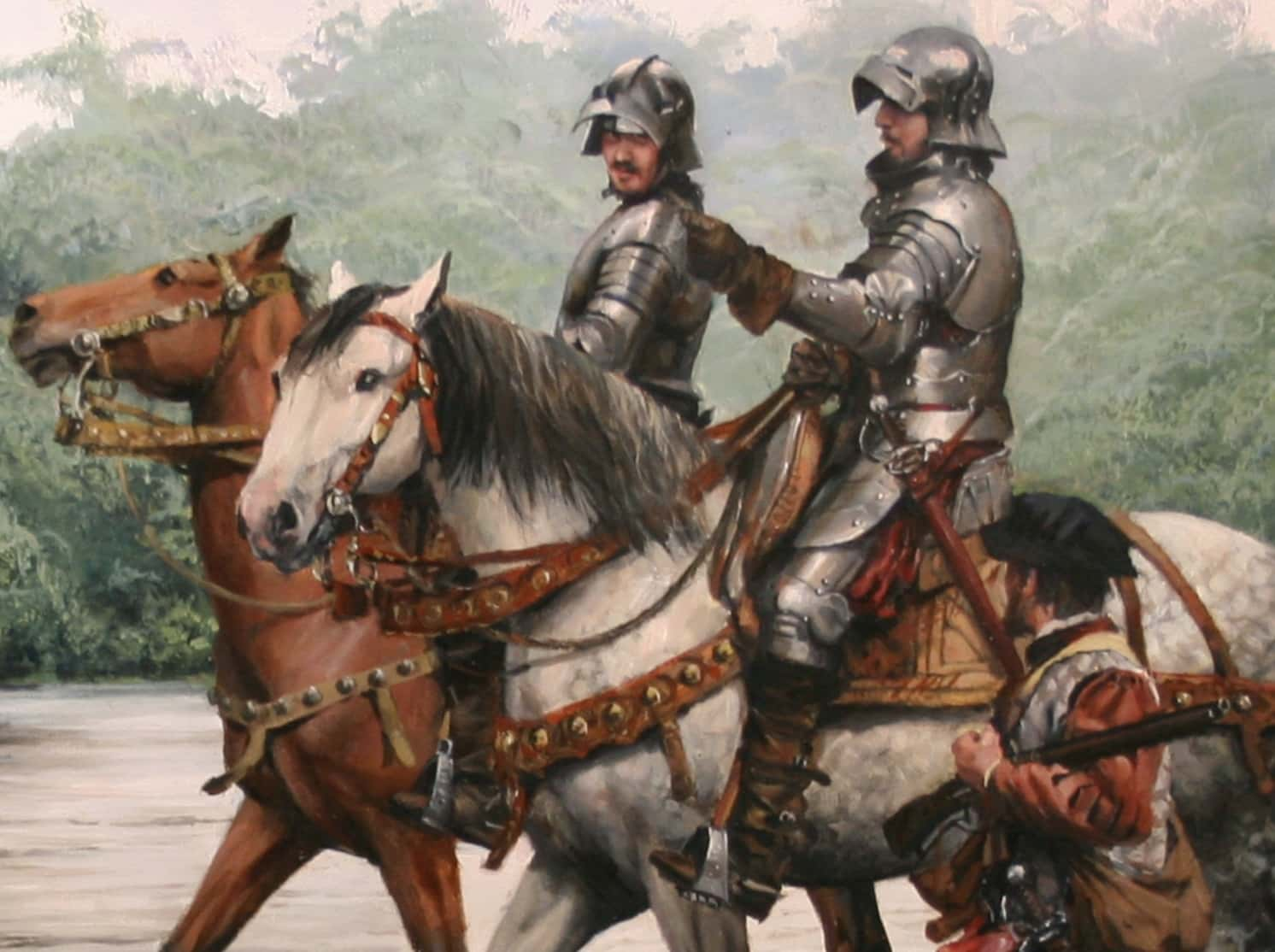An Enduring Legacy
If you’ve ever wondered why so many place names in the southwestern states have Spanish-sounding names, you’ve come to the right place! Coronado was an adventurer and conquistador whose bold expedition in the Southwest explored an enormous swathe of territory. It eventually led to a new wave of expansion that added to the already enormous Spanish Empire.
Governor Of A New Territory
Francisco Vazquez de Coronado was born in Salamanca, Spain in 1510 and first came to Mexico in 1535 as part of the entourage of the new Viceroy. Mexico had come under the control of Spain only 14 years earlier in 1521 as the conquistador Hernan Cortez brought about the shocking collapse of the Aztec Empire. Coronado was delegated as governor of Jalisco, Sinaloa, and Nayarit. It was there in 1539 that Coronado sent forth the Friar Marcos de Niza and a companion to explore and spread the word of God northward into New Mexico.
Coronado Hears A Wild Tale
When de Niza came back from his northern wanderings, he reported to Coronado the story of a fantastic city of gold called Cibola, that stood on a hilltop. As de Niza hadn’t entered Cibola and there was no one else to corroborate the story, Coronado wanted to know more about the city. There was nothing like gold to enflame the imagination of a conquistador and Coronado was no exception. He organized an expedition of his own northward.
A Dazzling Vision
Coronado was gripped by the vision of the famous fable of the Seven Cities of Gold. He mounted an expedition of 15 horsemen, 400 Spanish, and up to 2,000 Indian allies. This group, together with family members, slaves, and attendants trekked up the west coast of Mexico. The sparse vegetation and meager water meant that the group had to separate into smaller groups to be able to sustain themselves.
A Crushing Disappointment
The arduous journey through the scrublands and desert of northern Mexico eventually brought the expedition within range of the location that Friar de Niza had described, in the Sulphur Springs Valley of eastern Arizona. But instead of a shining city of gold, there was only a collection of mud-brick pueblos constructed by the local Zuni Indians. A fuming Coronado fired de Niza and sent him back to Mexico City.
Conquistador
The expedition was hard pressed to survive on the rugged and sparse terrain of the Southwest. Coronado’s men demanded entry into the Zuni pueblo of Hawikuh, but the Zunis refused. The Spanish seized the small settlement and used it as a base for more scouting expeditions in the region.
A Misleading Guide
Having long grown weary of the Spaniards, the Zuni Indians finally settled on a great way to get rid of them: tell them there was gold far off somewhere in another area. Taking the word of a local guide, Coronado journeyed as far as the Arkansas River in central Kansas with a smaller expeditionary force. Suddenly finding himself in the middle of nowhere on the vast flat expanse of the Great Plains, in 1541 Coronado realized he’d made a historic mistake. He decided to cut his losses and headed for home in disappointment.
 DesertRat71, CC BY-SA 4.0, Wikimedia Commons
DesertRat71, CC BY-SA 4.0, Wikimedia Commons
Coming Up Empty
Not only had Coronado not found a trace of the wealth described by de Niza, he had lost a fortune in financing the expedition. After he returned home, he was forced to declare bankruptcy. His troubles didn’t end there as he was accused of committing war crimes in his attacks on the Indian villagers. Though he was eventually cleared by a local court, a Spanish court convicted him on the same charges.
The Limits Of Conquest
Coronado lived in Mexico City where he took his last breath in 1554, the victim of a sudden infection. Though he’d once dreamed great dreams and taken huge risks to make his vision come true, he lived out the rest of his life in poverty. He didn’t live to see it, but Coronado’s vision and bold risk-taking helped pave the way for later Spanish colonization of the American Southwest and the enduring Spanish cultural presence throughout the region.
You May Also Like:
43 Gilded Facts About The California Gold Rush
Ruthless Facts About Philip II Of Spain, The Tarnished King












